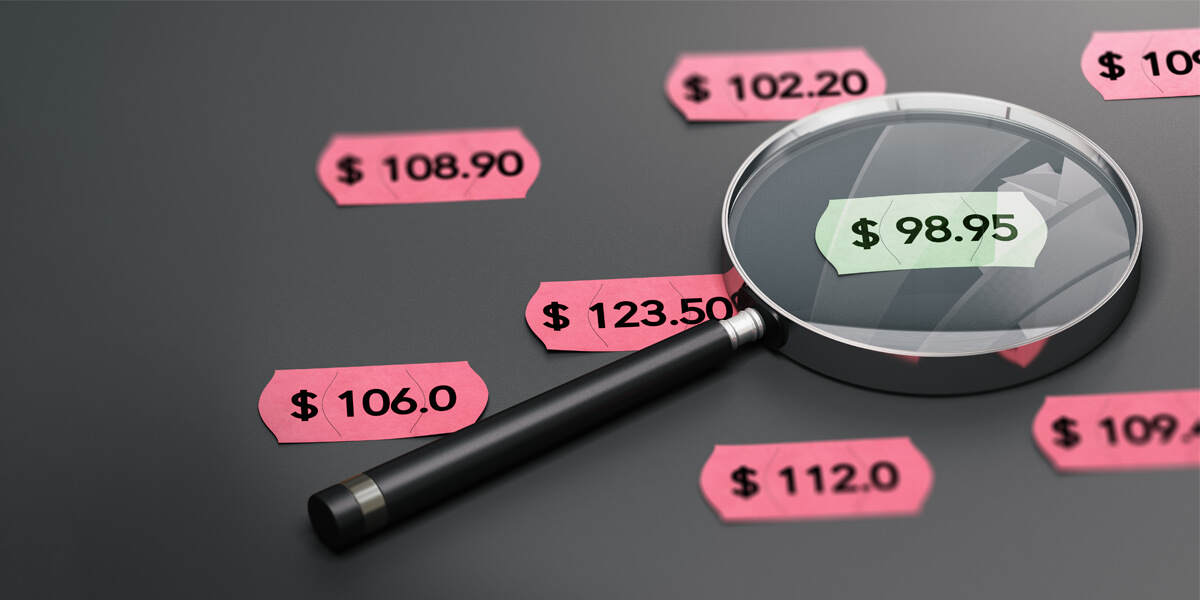One of the most pressing business questions any marketer or business owner has is – “How much people are willing to pay for a product or service?” Effective pricing research helps organizations determine the optimal price for their offerings, accounting for both their costs and the customer’s perceived value.
The goal of pricing research is to identify the sweet spot where a company can maximize its profits while still providing value to its customers.
Key reasons why any company should consider conducting robust pricing research:
- With inflation surging, consumers increasingly seek value, and price is becoming a major factor in their decisions to switch to different products or services
- 65% of shoppers browse online when at physical stores. This means they are more likely to make brand switches on their toes, hampering loyalty
- Most brands are constantly competing to maintain the fine balance between being too expensive and being undervalued as a brand through deep discounting
Read more: 5 reasons to employ pricing intelligence for your e-commerce website
Effective pricing research techniques:
The Van Westendorp Price Sensitivity Meter (PSM)
A Dutch economist named Peter Van Westendorp created this price sensitivity meter. It was constructed using a range of acceptable price points for a given product. The Van Westendorp Price Sensitivity Meter establishes the anticipated price range at which consumers would be willing to buy it. To create this range, customers are asked to evaluate a product and answer four questions:
- Too Expensive – At what point do you believe this item is too expensive to consider?
- Expensive – At what point do you consider this product to be expensive but worthwhile?
- Cheap – At what price would you consider this product a steal?
- Too Cheap – When would you start to believe a product was so cheap that you would start to doubt its quality?
Once the responses are collated, the cumulative frequency is arranged in a manner to provide a range of reasonable pricing points. These price points will cover the ideal price point as well as a range from a lower threshold to a higher threshold.
So, instead of focusing on a customer’s willingness to pay or the probability to purchase, PSM aims to understand their pricing expectations. It is used to determine potentially how much respondents see themselves paying for a product.
The Gabor-Granger technique
It entails asking respondents if they would be likely to buy the product within a range of four to five different price points.
The likelihood that respondents will buy a product at each of these predetermined price points is indicated. Such information is then utilized to establish the best pricing for the product in the market.
The Gabor-Granger technique asks respondents to assess predetermined price points previously approved by the company. This is in contrast to the Van Westendorp Price Sensitivity Meter, which allows respondents to invent prices to answer questions. It determines the best price range for a product by taking it into account alone.
Conjoint analysis
Conjoint analysis, sometimes referred to as discrete choice analysis, is a pricing research approach that’s regarded as the most trustworthy method of calculating a product’s price.
Researchers can find out how pricing and product attributes affect a customer’s desire to buy a product using a type of conjoint analysis known as discrete-choice modeling.
Using this technique, respondents have a choice between two to five product profiles, each with a distinct configuration. One of these profiles must be chosen by respondents. Researchers can develop price and packaging strategies that are most likely to appeal to buyers, thanks to the information gathered from respondents.
A significant understanding of the complexity of pricing and product preferences can be gained through discrete choice analysis. However, there is a fundamental disadvantage to this strategy. It takes specialist knowledge to carry out and frequently costs more than other pricing research methods.
Brand-Price Trade-Off (BPTO)
A statistical tool called BTPO, or Brand-Pricing Trade-Off, is used to determine the impact of price on many factors. These include profitability, revenue, market volume, and brand recognition.
This is a choice-based pricing method. It illustrates how consumers’ preferences for brands can vary depending on how much they are willing to pay.
Survey participants have presented a variety of branded goods, each of which has a price. Typically, the range consists of 3 to 5 items. Next, customers are asked which “deal” they find most alluring in a make-believe purchase scenario. For businesses that seek to comprehend the connection between a brand and its prices, BPTO is an effective pricing research model.
The five cardinal rules of conducting effective pricing research
1. Define the purpose of the research
Recognize the clients’ why, wherefore, when, and how, with regard to price choices. Include these aspects of the purchasing process in the study design to avoid getting inaccurate pricing information:
– the buying occasion
– including the timing and purpose of the purchase
– how frequently a purchase is made
– who is ultimately making the decision, and how long the process takes.
2. Know your tools and techniques
When it comes to tools, they are not all made equally. There are several popular techniques for gathering pricing information, but no two are identical, and no single method can be used consistently.
Therefore, it’s important to match the data-collecting strategy to the price issue for which you seek solutions.
3. Understand customer price perception
Price frequently has a strong emotional impact on a customer’s purchasing decision. Customers can experience a “sticker shock” when the price is too high and either defect to another provider or wait until the price decreases before making a purchase.
Sometimes, a buyer can also be filled with a sense of exclusivity and belonging and is willing to pay a premium price. Although the buyer perceives the price to be high in both situations, their responses are different. For a pricing research strategy to be effective. comprehend how your customers evaluate and perceive price in the purchase context.
4. Support your sales team
If your sales team is not on board, the influence of big data on pricing strategy will be small. A big data-using corporation must invest in its salespeople and provide them with up-to-date information on pricing strategy developments. They will require extensive training on how to navigate pricing changes and innovative ways of conveying the advantages to prospective clients.
5. Use segmentation for customer selection
To determine which customer group is “best” to service price segmentation is vital. Price targeting is generally done based on customer buckets. Yet many businesses give in to the urge to sell to the entire market just to increase volumes. Serving the unprofitable “cherry pickers’ at the expense of their lucrative “core customers” causes such businesses to suffer.
If done right, pricing research can improve the overall quality and market positioning with a solid scientific foundation. At Netscribes, leading brands across the B2B and B2C space have approached us over the past two decades, enlisting the help of our expert researchers to conduct pricing research effectively and accurately. To know how we can help you maximize revenue and get the most out of your pricing decisions, contact us.
Based on insights by Suchita Biswas, Senior Manager, Research and Information, Consumer Team.






